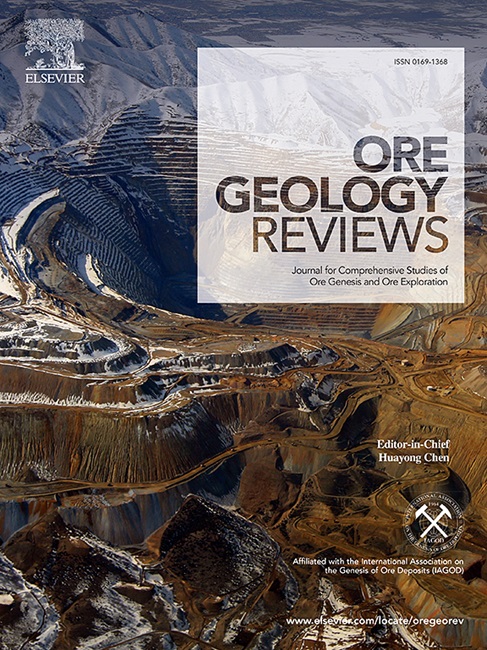The distinctiveness of carbonaceous debris in uranium reservoirs under arid sedimentary backgrounds and its implication for uranium mineralization: A case study of northern Ordos Basin
IF 3.2
2区 地球科学
Q1 GEOLOGY
引用次数: 0
Abstract
In the northern Ordos Basin, numerous studies have revealed close associations between carbonaceous debris (i.e., CD) and uranium mineralization in the Zhiluo Formation (i.e., J2z), which is greatly influenced by the humid sedimentary backgrounds. However, recent exploration has shown that the reservoirs in the Lower Cretaceous under arid sedimentary backgrounds are also rich in uranium resources, but CD within them is scarce and shows significant differences. The present study investigates the macerals, maturity and mineral composition of CD in the Huanhe Formation (i.e., K1h) by mainly using optical microscope, photometer, scanning electron microscopy and energy dispersive spectroscopy. The results show that CD in K1h is composed of vitrinite (mainly telinite) and inertinite (mainly fusinite), with inertinite content (i.e., IC) ranging from 0 to 19.81 %. Its vitrinite reflectance (i.e., VR) ranges from 0.415 % to 0.987 %. The plant cell cavities and fissures inside the CD are rich in uranium minerals, pyrite, and various other minerals. Compared with CD in J2z (IC = 0 to 12 %, VR = 0.258 % to 0.514 %), most CD in K1h is of significantly higher IC and VR. The analysis reveals that 96 % of CD in J2z (VR < 0.5 %) originates from synsedimentary plant remains or peat debris and only 4 % (VR > 0.5 %) originates from ancient strata. By contrast, CD in K1h can be classified into two genetic categories: endogenous supply from the basin (VR < 0.5 %) and exogenous supply from provenance (VR > 0.5 %), with the latter accounting for 62.5 %. The former originates from coal debris of Middle Jurassic or synsedimentary plant remains. It can be subdivided into two subcategories according to diverse coal debris or varying degrees of modification by fire and oxidation: exhibiting low IC (<12 %) and high IC (>12 %) respectively. The latter originates from coal debris or old CD transported from the provenance. It can also be subdivided into two subcategories based on the IC of the parent rocks. Importantly, the CD, although rare, exhibits close associations with pyrite and uranium minerals, suggesting its significant role as the key enrichment agent for uranium precipitation under arid sedimentary backgrounds.

求助全文
约1分钟内获得全文
求助全文
来源期刊

Ore Geology Reviews
地学-地质学
CiteScore
6.50
自引率
27.30%
发文量
546
审稿时长
22.9 weeks
期刊介绍:
Ore Geology Reviews aims to familiarize all earth scientists with recent advances in a number of interconnected disciplines related to the study of, and search for, ore deposits. The reviews range from brief to longer contributions, but the journal preferentially publishes manuscripts that fill the niche between the commonly shorter journal articles and the comprehensive book coverages, and thus has a special appeal to many authors and readers.
 求助内容:
求助内容: 应助结果提醒方式:
应助结果提醒方式:


